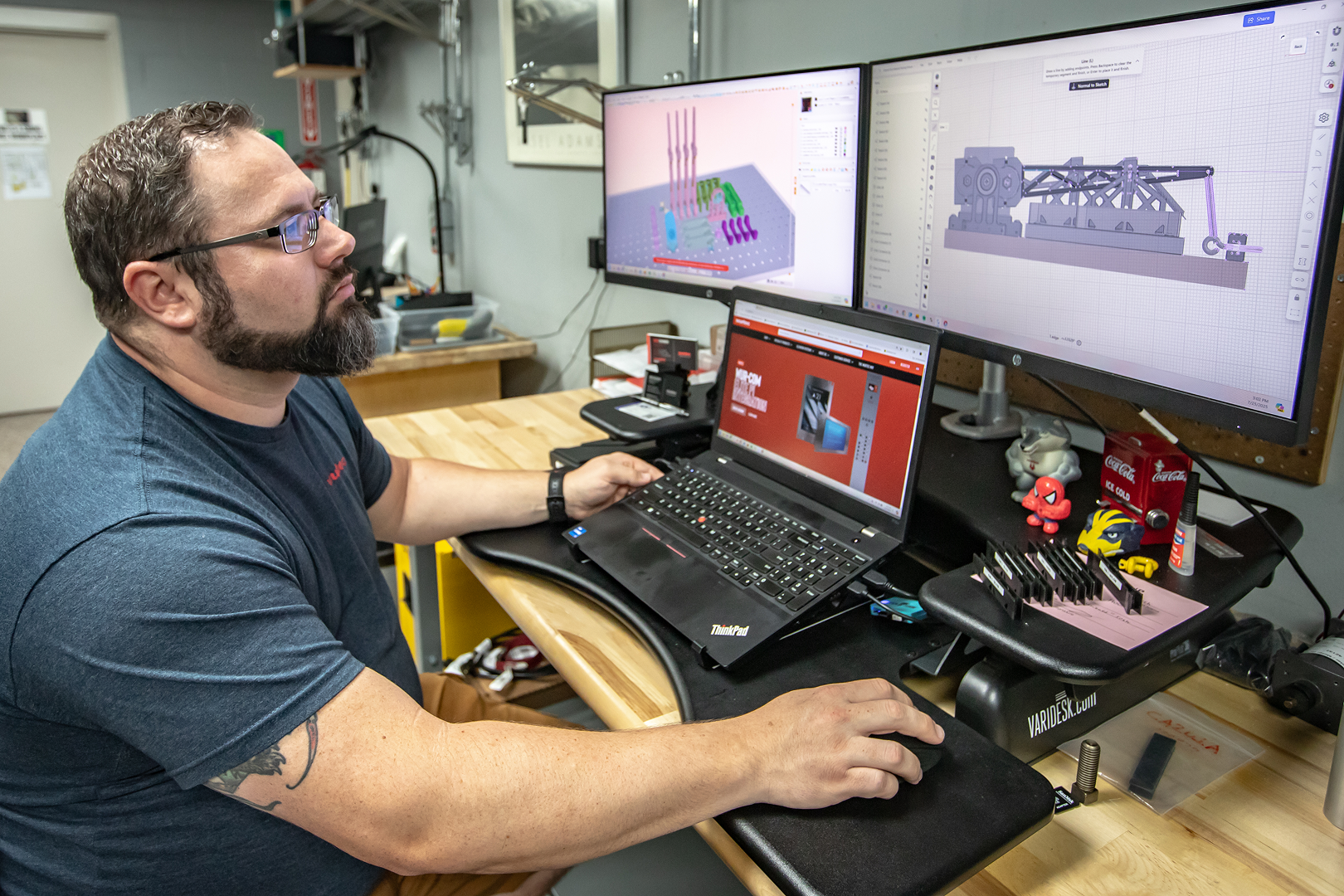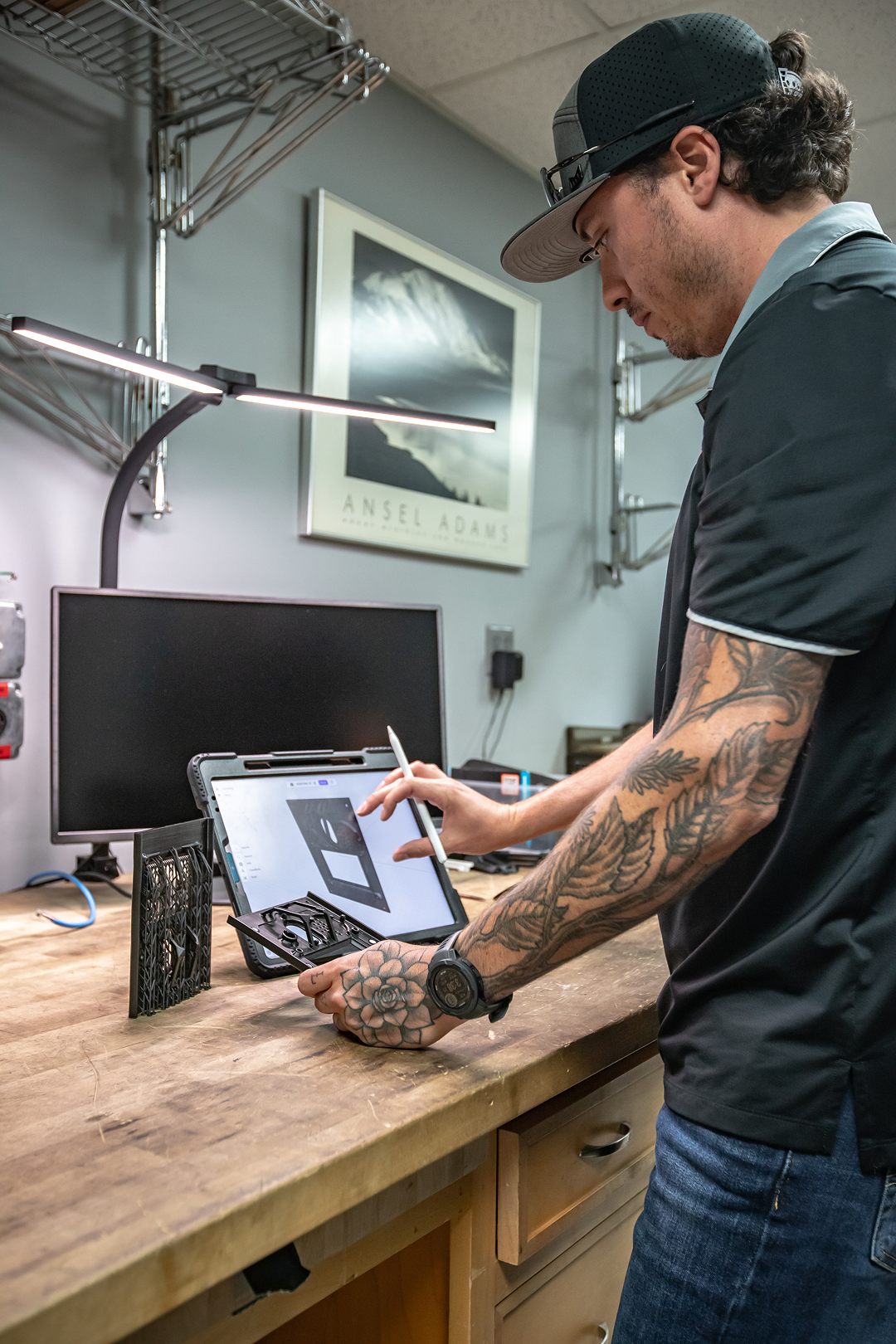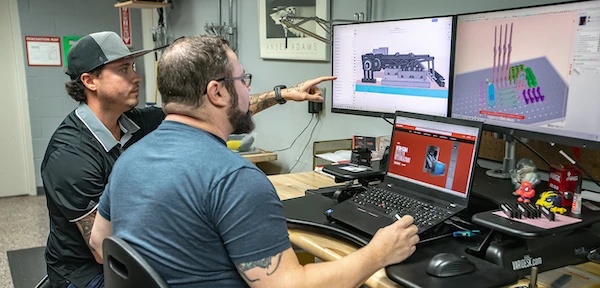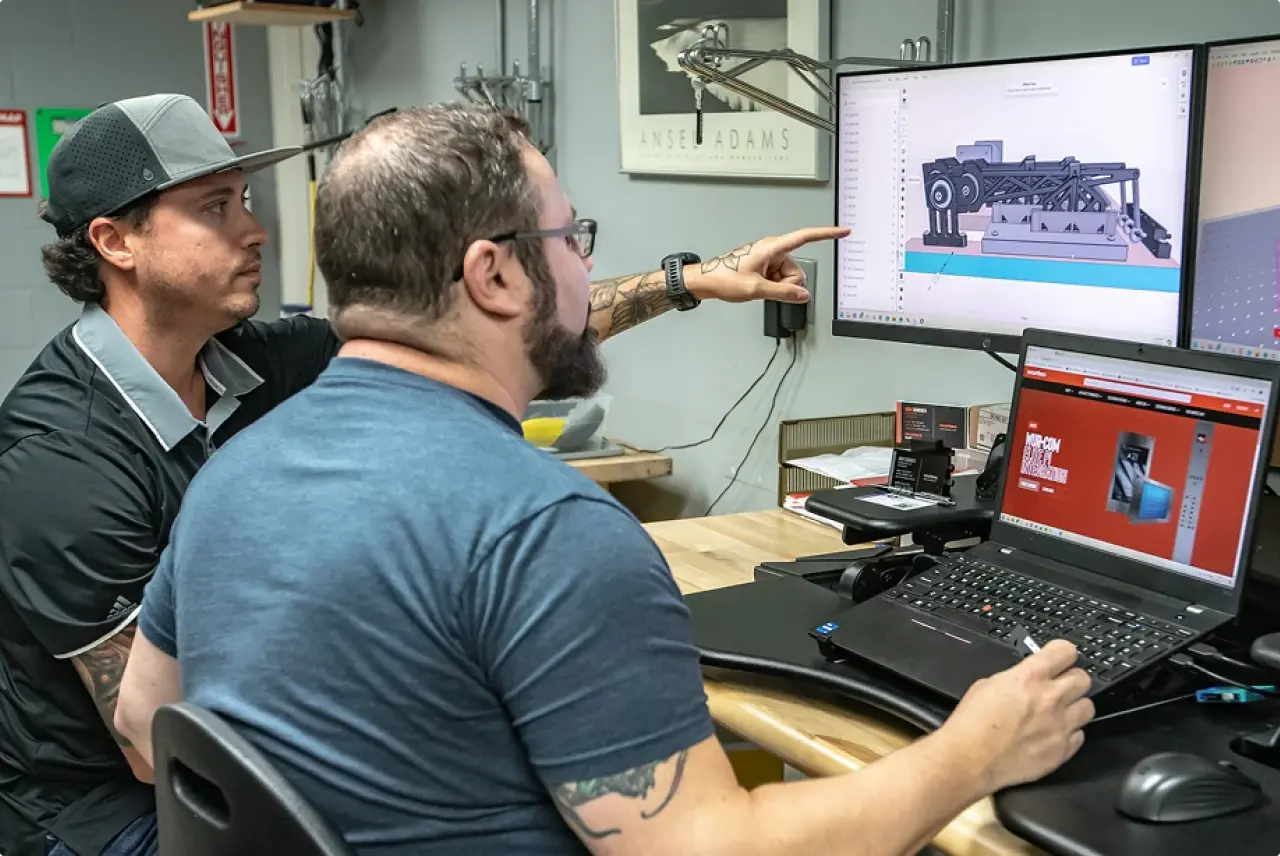
Wurtec designs and builds safety equipment and tools for elevators, serving global manufacturers and local service professionals.
Manufacturing, elevator safety equipment
Mid-size business
Toledo, Ohio, USA
How Wurtec transformed communication and sped up innovation
If you’ve ever tried explaining a technical idea using just words or rough sketches, you know how frustrating it can be. What seems obvious in your head turns into a confusing mess once it's out in the open. At Wurtec, a company that designs and builds safety equipment and tools for elevators, that disconnect was more than frustrating. It quietly eroded momentum, slowing down day-to-day progress in ways that weren’t always obvious. It didn’t show up as a red flag, just as a constant undercurrent: friction, delays, miscommunication. It’s the kind of slowdown you feel, but rarely challenge, until someone shows there’s a better way.
For Wurtec, that happened when two team members—Josh, a technician, and Chris, an R&D engineer—each started using Shapr3D to bring their ideas to life.

From “I know what I mean” to “Now everyone gets it”
Josh Schober is a technician who builds and tests the fixtures and components that keep elevator systems safe. He’s hands-on, technical, and full of ideas. But until recently, he had a hard time turning those ideas into something others could understand.
"Everyone thinks about problem-solving differently," Josh explained. "I know that for me it's very easy to picture what it is that I'm thinking of, but to get that out in words and have someone else understand that picture is very difficult."
During one design review, Josh proposed a new setup for a testing rig. He tried explaining it out loud, but communication stalled. So he turned to Shapr3D.
"It took me less than five minutes to draw up just a rough thing in Shapr3D and present it to the meeting lead afterwards. It communicated everything that I needed very easily," he said.
Since then, Josh has been using Shapr3D to speed up everything from planning test stands to ordering hardware. He imports the parts he needs, sketches the idea, and gets feedback in real time. "It breaks down that barrier where I’m trying to describe a picture in my head, and the other person is trying to imagine it from my words," he said.

Meanwhile, in R&D: A different challenge, same pain
Christopher Blessing leads innovation at Wurtec. His work moves fast—rapid concepting, tight customer feedback loops, and constant iteration. But his CAD tools weren’t keeping up.
“To do [a feature-dense design] in SolidWorks, I have to have a really good idea on how I'm going to get to the end,” he said.
But in the middle of fast-paced meetings and active ideation, that just wasn’t realistic. He needed something more flexible. Something he could use to communicate ideas, not just document them.
That’s when he started using Shapr3D.
“We were having a conversation with a customer about a safety tool they wanted to implement,” Chris said. “It was super easy, took about five minutes to model up, and I was able to show it to them and have a much more constructive conversation. Then, we used AR to throw it into the room and get a sense of size, too.”
Instead of showing up to meetings with rigid files, Chris now brings his iPad—sketching ideas live, tweaking on the fly, and leaving with clarity, not follow-ups.
He and Josh also collaborate in Teamspaces to stay in sync. “Josh's able to put a design into the shared team space. I’m able to go through it and make modifications,” Chris said. “It’s been really helpful.”
And he sees bigger potential ahead:
“We want to make this a standard for our additive components,” he said. “I can see this happening in the future where one of the guys on the floor has an issue, we modify [the model] really quickly and show them... If we did this, would it make your life easier? They say, yep. And then we go and make the change.”
Two paths, one breakthrough: Visual communication
Josh and Chris work in different roles, with different goals and pressures. But they both ran into the same fundamental problem: their ideas weren’t getting through. For Josh, words and hand sketches fell short. For Chris, traditional CAD was too slow and rigid to keep pace with live conversations. What made the difference? Turning ideas into something visual, an instant reflection of their thoughts, fast enough to keep the conversation going.
Shapr3D gave them a way to turn rough concepts into clear, shareable models that anyone could understand instantly. Whether it’s communicating across roles internally or aligning quickly with external stakeholders, 3D modeling became their shared language.
"Instead of spending half a day trying to explain what’s in my head, I just show it," Josh said.
"We had a request on a Monday... I had it done Wednesday morning. We had it printed by Thursday," Chris recalled. "To do that any other way would have been at least three to four weeks."

More than modeling: Speeding up the whole workflow
The impact? Faster decisions. Better feedback. Fewer misunderstandings. And a much shorter path from idea to product.
What used to be a slow, frustrating process that was once accepted as the norm has turned into a smooth, fast-moving workflow. It empowers everyone—regardless of role or CAD experience—to contribute ideas and move projects forward.
At Wurtec, this shift hasn’t just changed how Josh and Chris work—it’s changed how ideas move through the company. Now they travel faster, land clearly, and meet less friction.
And it all started with a tool that turned 3D modeling into a shortcut to clarity.






